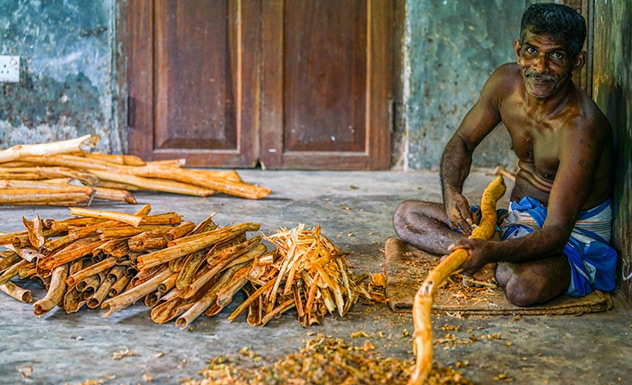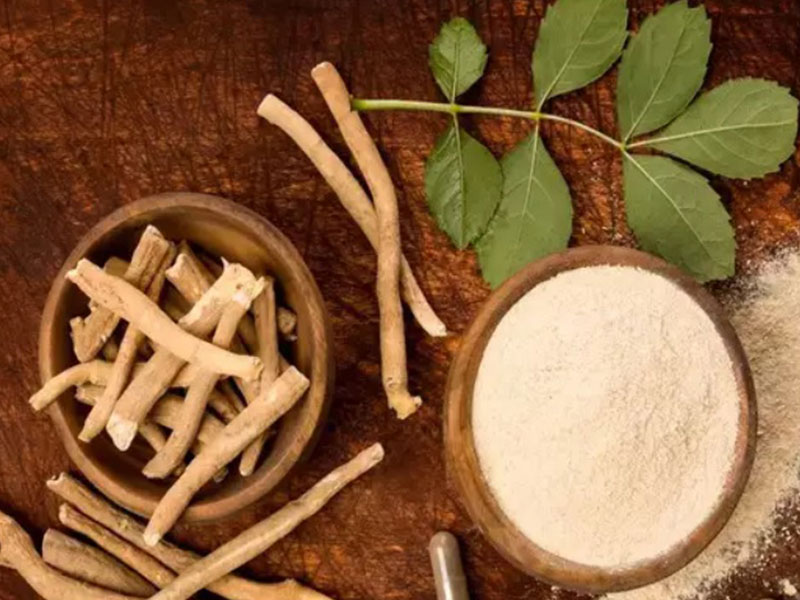Amid the sun-drenched coastal belt of Southern Sri Lanka, where the sea breeze whispers through ancient groves, the art and aesthetics of cinnamon are woven into the very fabric of the land. Here, the cinnamon trees—elegant and unassuming—stand as sentinels of a rich cultural legacy, their slender, golden-brown bark concealing a treasure that has flavoured history itself.
For centuries, these cinnamon groves have thrived, bearing witness to a past shaped by trade, colonial ambition, and the resilience of Sri Lankan communities. This is no ordinary spice; it’s the “sweet cinnamon,” the true Ceylon Cinnamon, cherished for its lush aroma and delicate flavor that has enchanted palates across the globe. But beyond its culinary allure, cinnamon is a testament to the skill and dedication of the peelers—those artisans who, with meticulous care, strip away the bark, revealing the fragrant quills within.
Picture a cinnamon peeler at work: seated on the floor, tools arranged beside him, he gently scrapes away the rough outer layer, his hands moving with the practiced ease of generations. With a deft flick of his brass rod, he loosens the bark, coaxing it away from the wood with the precision of a surgeon. The quills, once peeled and air-dried, curl into the familiar cigar-like rolls that carry the essence of Sri Lanka to distant lands.
Yet, this age-old craft is under threat, as modernity creeps into the rhythms of rural life. Once, the art of cinnamon peeling was passed down from father to son, mother to daughter, a livelihood and a legacy intertwined. Now, only a few families continue the tradition, their work a link to a time when cinnamon was worth more than gold, when Arab traders and European colonizers vied for control of the island’s fragrant riches.
In February, Ceylon Cinnamon earned a new distinction—Protected Geographical Indication status—a triumph for Sri Lanka’s cinnamon farmers who have nurtured this spice with the same care and reverence their ancestors did. This recognition not only secures the island’s place in the global market but also honors the cinnamon peelers who, with each quill they craft, keep alive a tradition that is as much a part of Sri Lanka as the cinnamon trees themselves.

In a world where fast-paced convenience often overshadows time-honored skills, the story of Ceylon Cinnamon is a reminder that some things are worth preserving. The delicate flavor of this spice carries with it the echoes of history, the artistry of the peelers, and the enduring beauty of a craft that, like the cinnamon itself, is both sweet and strong.
To globally market the art of cinnamon, focusing not only on selling cinnamon sticks but also on the production process and the rich cultural stories surrounding it, can create a multifaceted and engaging experience that attracts both tourists and international attention. Here’s how this can be achieved:
1. Cinnamon Tourism: The Experiential Route
Cinnamon Plantation Tours: Develop guided tours of cinnamon plantations, where visitors can witness the entire cinnamon production process—from the peeling of the bark to the drying and rolling of quills. These tours could include hands-on experiences, allowing tourists to try peeling cinnamon themselves under the guidance of skilled local peelers. This immersive experience would appeal to tourists interested in both culinary arts and cultural heritage.
Cinnamon-Themed Retreats and Workshops: Offer retreats that combine wellness activities, such as yoga and meditation, with workshops on cinnamon peeling, cooking with cinnamon, and even making cinnamon-infused beauty products. Such retreats could be marketed to wellness enthusiasts and culinary tourists seeking a deeper connection with the source of the spice.
2. Storytelling and Cultural Marketing
Narrative Branding: Position Ceylon Cinnamon as not just a spice but a symbol of Sri Lankan heritage. Share the stories of the cinnamon peelers, the history of cinnamon trade, and the cultural significance of the spice in Sri Lankan traditions. These stories can be shared through documentaries, social media campaigns, and collaborations with travel bloggers and influencers.
Cultural Festivals and Events: Host annual festivals celebrating the harvest of cinnamon, featuring traditional music, dance, and food prepared with the spice. These events can attract both local and international tourists, drawing attention to the cultural richness of cinnamon.
3. Educational and Culinary Tourism
Culinary Schools and Masterclasses: Partner with culinary schools or celebrity chefs to offer masterclasses focused on cooking with cinnamon, exploring its versatility in both traditional and modern cuisine. These classes could be held in Sri Lanka or as part of global culinary tours.
Educational Content: Create educational content, such as videos and articles, that delve into the botanical and agricultural aspects of cinnamon. Highlight the sustainable practices used in its cultivation, appealing to eco-conscious consumers and tourists.
4. Global Collaborations and Product Lines
Collaborations with Global Brands: Collaborate with international brands to create exclusive product lines that feature Ceylon Cinnamon, such as luxury chocolates, skincare products, or artisanal spirits. These collaborations can highlight the unique qualities of Ceylon Cinnamon and drive global demand.
Artisan Cinnamon Products: Develop a range of artisan products that go beyond cinnamon sticks, such as cinnamon-infused oils, teas, and confectioneries. These products can be marketed as premium, hand-crafted goods, emphasizing their origin and the traditional methods used in their production.
5. Sustainability and Fair Trade Initiatives
Fair Trade Certification: Obtain fair trade certification for Ceylon Cinnamon, ensuring that the peelers and farmers are fairly compensated. Promote this certification in global markets to attract ethically-minded consumers.
Eco-Tourism and Conservation: Integrate cinnamon production into eco-tourism initiatives, where part of the proceeds support the conservation of cinnamon groves and the well-being of local communities. This approach can appeal to tourists interested in sustainable travel and conservation efforts.
By weaving together the rich cultural history, traditional craftsmanship, and sustainable practices associated with Ceylon Cinnamon, Sri Lanka can position the spice as a unique cultural artifact, not just a culinary ingredient. This strategy would create a more profound global impact, attracting tourists, increasing international demand, and ensuring the preservation of the cinnamon-peeling tradition for future generations.







